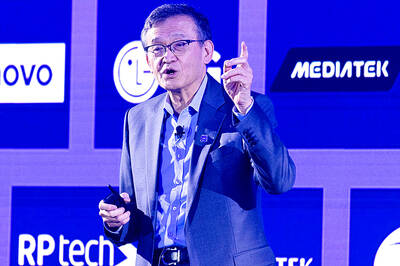More than 1,000km2 of land has been added to an online government database of areas prone to soil liquefaction, a Ministry of Economic Affairs statement said yesterday.
The statement, issued by the Central Geological Survey, includes information on up to 1,667.6km2 of land in northern Tainan, northern and southern Kaohsiung, the Hengchun Plain in Pingtung County and Hualien County.
The database went online on March 14, 2016, and was updated on Dec. 16 that year to cover Taipei, New Taipei City, Hsinchu City, Hsinchu County, Taichung, Changhua County, Chiayi City, Chiayi County, Yunlin County, parts of Tainan, parts of Kaohsiung, Pingtung County and Yilan County, the statement said.
After the most recent update, the database now covers soil liquefaction information on about 7,900km2 of land, the statement said.
People can visit www.moeacgs.gov.tw to check if their home is in a soil liquefaction-prone area.
Different colors are used to represent levels of vulnerability, with green representing low vulnerability, yellow representing medium vulnerability and red representing high vulnerability.
Soil liquefaction occurs when shaking during an earthquake causes saturated granular material to behave like a liquid.
The condition became an issue of public concern when it was believed to have been a factor in the collapse of a building and the subsequent death of 117 people in a magnitude 6.4 earthquake that struck southern Taiwan on Feb. 6, 2016.
The database is to be updated again next year to include information for Keelung, Taoyuan, Miaoli County, Nantou County and Taitung County, the statement added.

Intel Corp yesterday reinforced its determination to strengthen its partnerships with Taiwan’s ecosystem partners including original-electronic-manufacturing (OEM) companies such as Hon Hai Precision Industry Co (鴻海精密) and chipmaker United Microelectronics Corp (UMC, 聯電). “Tonight marks a new beginning. We renew our new partnership with Taiwan ecosystem,” Intel new chief executive officer Tan Lip-bu (陳立武) said at a dinner with representatives from the company’s local partners, celebrating the 40th anniversary of the US chip giant’s presence in Taiwan. Tan took the reins at Intel six weeks ago aiming to reform the chipmaker and revive its past glory. This is the first time Tan

Qualcomm Inc is strengthening its partnerships with Taiwan Semiconductor Manufacturing Co (TSMC, 台積電) and original design manufacturers (ODMs) in Taiwan as it expands its presence in the artificial intelligence (AI) computer market, CEO Cristiano Amon said in Taipei yesterday ahead of the annual Computex trade show. “Historically we’ve always been a very big customer of TSMC, and we continue to be,” Amon said during a media Q&A session. “For chip manufacturing, we’re among the largest fabless [semiconductor designers],” he said, noting that Qualcomm, a leading provider of mobile and AI-enabled chipsets, ships about 40 billion components every year, with TSMC being

‘FAILED EXPORT CONTROLS’: Jensen Huang said that Washington should maximize the speed of AI diffusion, because not doing so would give competitors an advantage Nvidia Corp cofounder and chief executive officer Jensen Huang (黃仁勳) yesterday criticized the US government’s restrictions on exports of artificial intelligence (AI) chips to China, saying that the policy was a failure and would only spur China to accelerate AI development. The export controls gave China the spirit, motivation and government support to accelerate AI development, Huang told reporters at the Computex trade show in Taipei. The competition in China is already intense, given its strong software capabilities, extensive technology ecosystems and work efficiency, he said. “All in all, the export controls were a failure. The facts would suggest it,” he said. “The US

NEW PRODUCTS: MediaTek has been diversifying its product lines to minimize operational risks as mobile chips remain the company’s biggest revenue source MediaTek Inc (聯發科), the world’s biggest supplier of smartphone chips, yesterday said the tape-out process for its first 2-nanometer chip would take place in September, paving the way for volume production of its most advanced chip, likely to be its next-generation flagship smartphone chip, around the year-end at the earliest. MediaTek has been leveraging advanced process technologies from its foundry partner, Taiwan Semiconductor Manufacturing Co (TSMC, 台積電), to build its flagship mobile phone chips, a segment it once relinquished and then recovered four years ago as it released its Dimensity series. In the semiconductor industry, a tape-out refers to the